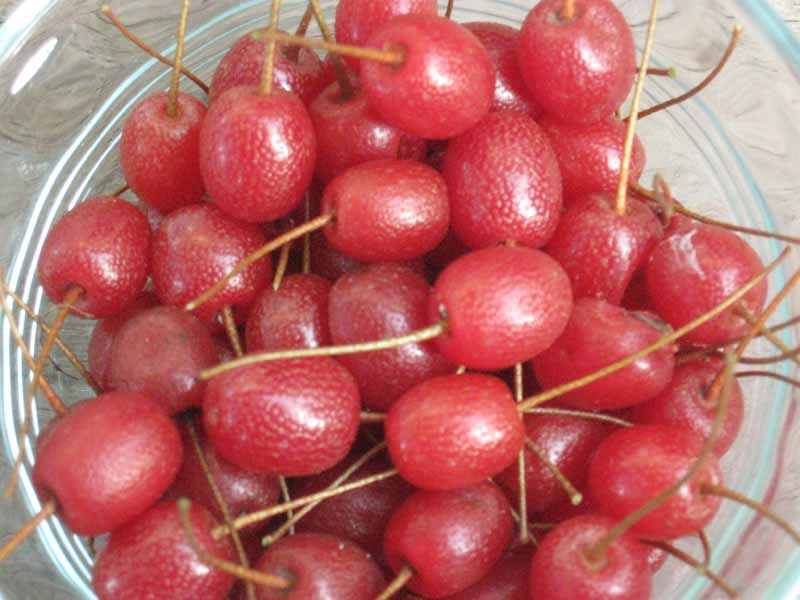Unusual Fruits Should Be Grown More
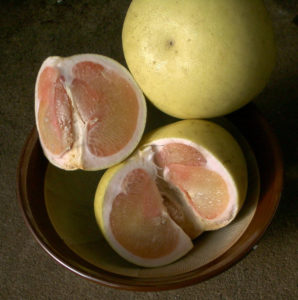 Cruising down the produce aisle can be an eye-opening experience these days. Our new age grocery stores and TV cooking channels have opened up a new world of fruits and ways for adventurous cooks to prepare them. One click on the internet and you can get a page of sites telling you how to make quince preserves, use elderberry flowers in pancakes, or what’s the easiest and fastest way to  prepare and serve pummelo. People will spend a fortune to get these fruits shipped to them from the far reaches of the world, and many unusual fruits are rarely found in supermarkets, so growing your own is often the only way of acquiring them.
Cruising down the produce aisle can be an eye-opening experience these days. Our new age grocery stores and TV cooking channels have opened up a new world of fruits and ways for adventurous cooks to prepare them. One click on the internet and you can get a page of sites telling you how to make quince preserves, use elderberry flowers in pancakes, or what’s the easiest and fastest way to  prepare and serve pummelo. People will spend a fortune to get these fruits shipped to them from the far reaches of the world, and many unusual fruits are rarely found in supermarkets, so growing your own is often the only way of acquiring them.
What many people don’t realize is that our North Florida climate, with its warm winters and long summers, is a Mecca for many of the most unusual temperate fruits; there really are few places in the world that you can grow apples and oranges in the same garden. Besides the fact that unusual fruits are tasty, many are beautiful additions to the edible landscape. Pineapple guava makes a durable thick hedge with minty blue evergreen foliage. The persimmon tree is unrivaled in the fall with its scarlet and orange toned foliage, and goumi has intensely fragrant blooms. If you want to plant something you’ve never heard of or can’t find anywhere else, here’s a list of fruits to try:
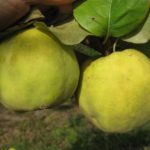
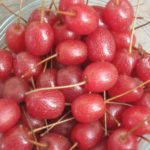 Goumi (Elaeagnus multiflora) A deciduous shrub that grows well in poor soils. The cherry-like red fruit is ripe in mid summer, tart sweet, liked pomegranantes the fruit is used to make jam, jellies, and sauces.
Goumi (Elaeagnus multiflora) A deciduous shrub that grows well in poor soils. The cherry-like red fruit is ripe in mid summer, tart sweet, liked pomegranantes the fruit is used to make jam, jellies, and sauces.
Quince (Cydonia oblonga) This is not the shrubby ‘flowering quince’, but a fruiting tree producing large, whitish-pink flowers and large yellow fruit early fall for baking, sauces, and preserves.
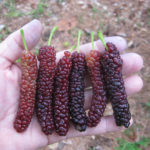
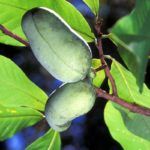 Mulberries (Morus alba) Mulberries make large shade trees. The fruit can be white or red, but it is usually black in color. It is similar to blackberries in flavor but without the pesky seeds, great fresh off the tree or for juicing, jellies, and wine.
Mulberries (Morus alba) Mulberries make large shade trees. The fruit can be white or red, but it is usually black in color. It is similar to blackberries in flavor but without the pesky seeds, great fresh off the tree or for juicing, jellies, and wine.
Paw Paw (Asimina triloba) Going under various nicknames like Michigan or Kentucky banana, this native tree is a small grower and a good choice for a shady yard. The fruit has a candied apple flavor and is delicious fresh or in cakes and breads.
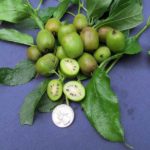
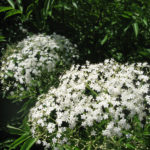 Elderberries (Sambucus canadensis) Another native, usually found in swampy areas but will grow well in a wide range of soils. The sweet flowers and shiny black fruit are born in clusters. Flowers are harvested for adding to pancakes. The juicy fruit are a rich source of iron and vitamin C, use them for making jelly, jam, pie, juice, and wine.
Elderberries (Sambucus canadensis) Another native, usually found in swampy areas but will grow well in a wide range of soils. The sweet flowers and shiny black fruit are born in clusters. Flowers are harvested for adding to pancakes. The juicy fruit are a rich source of iron and vitamin C, use them for making jelly, jam, pie, juice, and wine.
Kiwi (Actinidia deliciosa) Kiwis are produced on a fast growing vine, great for covering an old fence or shady pergola. The fall ripening fruit is a great tangy sweet addition to fruit salads or smoothies.

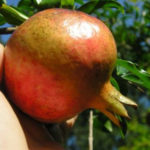 Pomegranate (Punica granatum) Pomegranate juice is the health fruit of the day at, $9.99 a pint, what a better reason to grow your own.
Pomegranate (Punica granatum) Pomegranate juice is the health fruit of the day at, $9.99 a pint, what a better reason to grow your own.
Olive (Olea europaea L.) Yes, olives grown in North Florida; in fact there may be a commercial grove near you in the near future. Fruit are harvested in the fall, and with a homemade press you too can make your own olive oil.
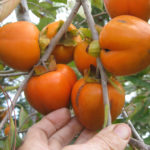
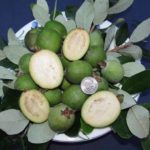 Persimmon (Diospyros kaki) If you like fresh ripe cantaloupe then you’ll love the crunch sweet flavor of non-astringent persimmons, excellent paired with tangy fruits like tangerines and peaches in fruit salads. The astringent persimmon must be eaten when soft and juicy; they are extremely sweet, much like eating maple syrup. Persimmons are known for their low maintenance requirements; they thrive in poor soils rarely need spraying, and are long lived trees.
Persimmon (Diospyros kaki) If you like fresh ripe cantaloupe then you’ll love the crunch sweet flavor of non-astringent persimmons, excellent paired with tangy fruits like tangerines and peaches in fruit salads. The astringent persimmon must be eaten when soft and juicy; they are extremely sweet, much like eating maple syrup. Persimmons are known for their low maintenance requirements; they thrive in poor soils rarely need spraying, and are long lived trees.
Pineapple Guava (Acca sellowiana) So easy to grow, this tall evergreen shrub is covered in May with beautiful pink and crimson flowers. The soft pink flower petals have a minty sweet flavor and are a tasty snack. The fruit ripens in late fall and are used fresh in fruit salads, or made into pies, jams, and fantastic Brown Betties.

